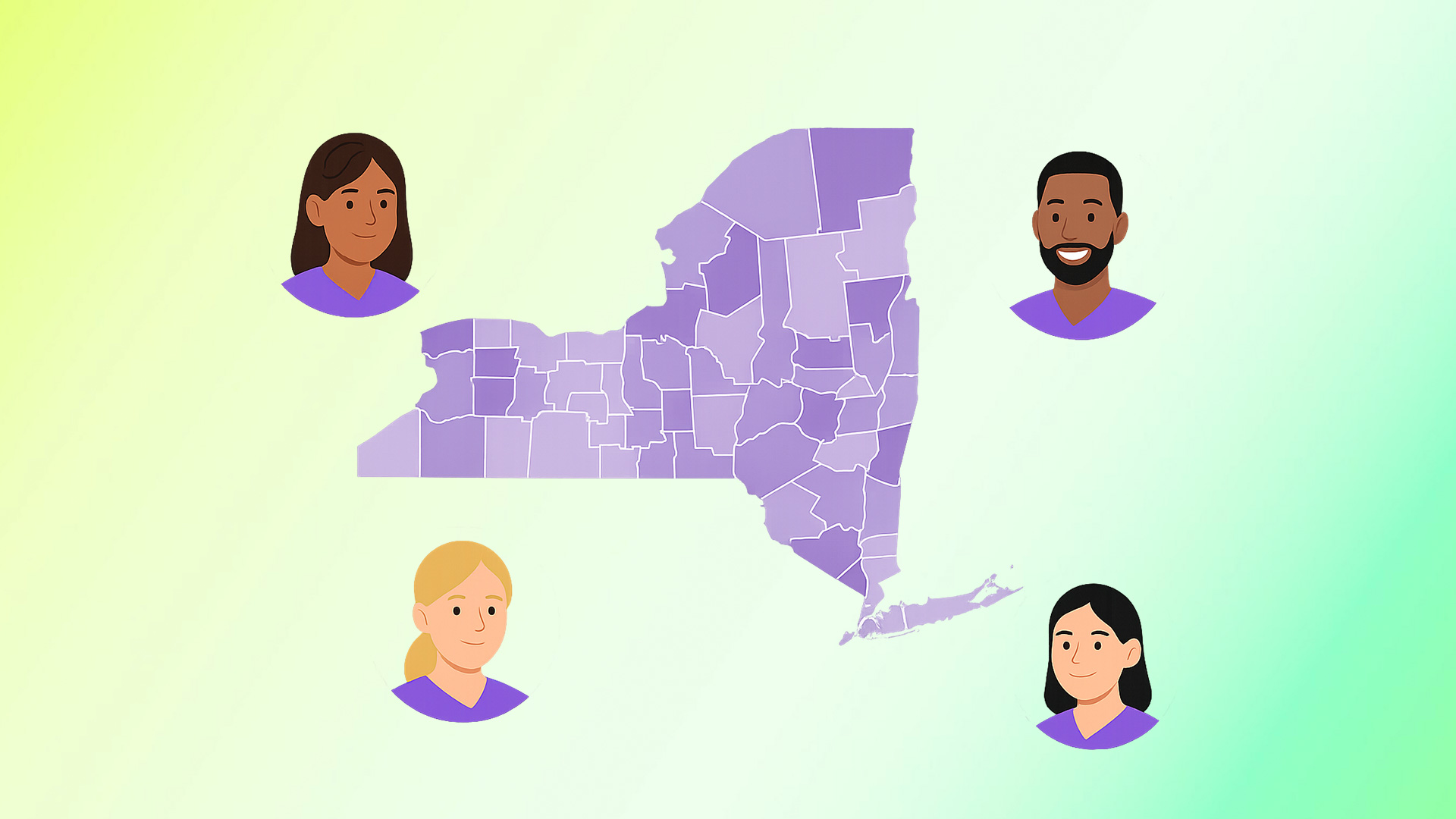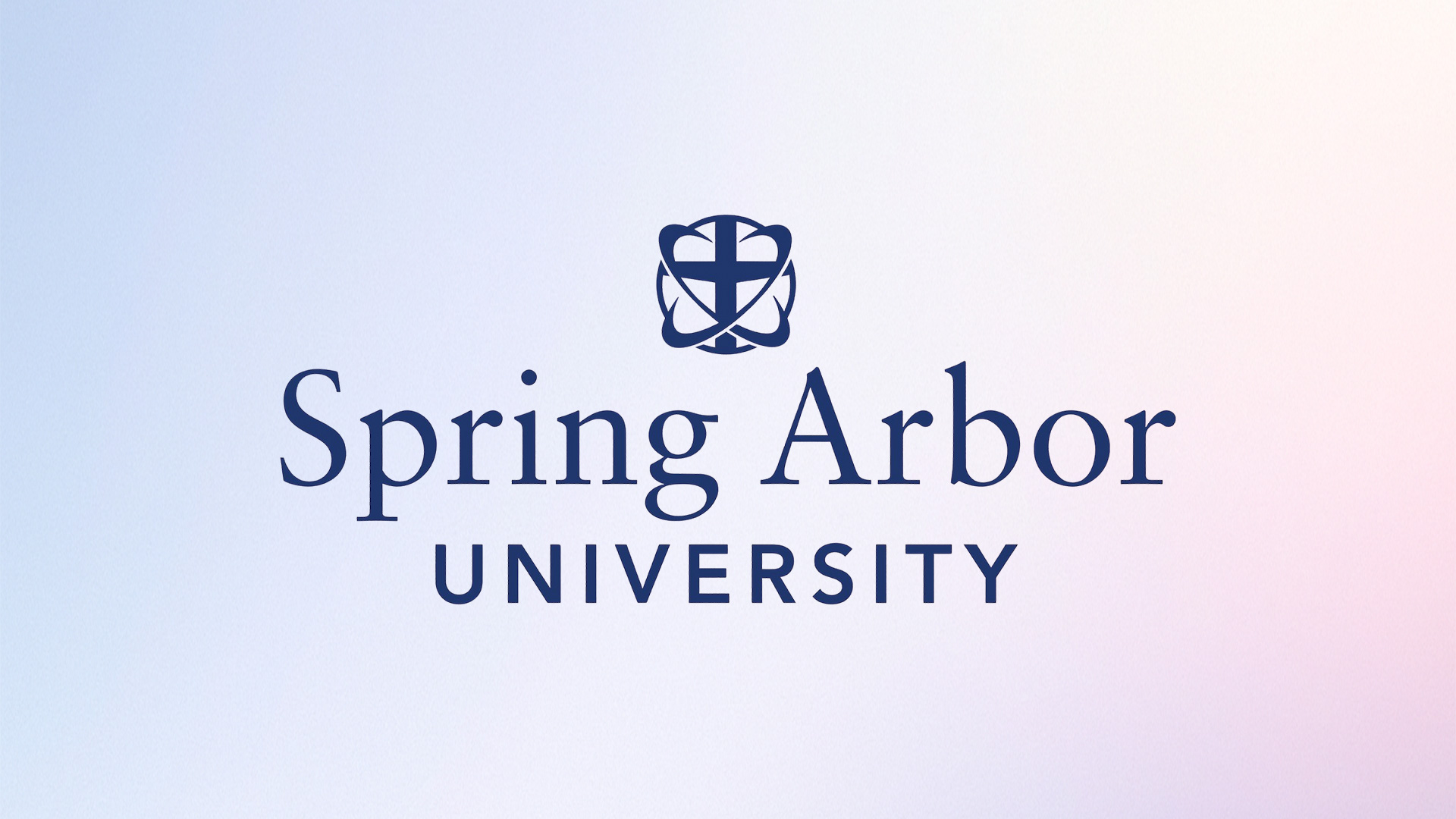Clinical rotations are supervised, hands-on training experiences that allow nurse practitioner students in New York to apply their education in real clinical settings under an approved preceptor. Most programs require 500–800 hours across multiple specialties like internal medicine or women’s health, and these rotations are essential for both graduation and licensure in the state.
TL;DR – New York Nurse Practitioner Preceptor Finder: Navigate Clinical Placements in the Empire State
- Clinical rotations are a required part of nurse practitioner education in New York, providing real-world experience in hospitals, primary care, internal medicine, and specialty settings under approved preceptors.
- Most New York NP students are responsible for securing their own clinical placements. SUNY Brockport and SUNY Poly offer limited administrative support, while NYU Rory Meyers College of Nursing handles placements directly for medical and nurse practitioner students.
- The average NP salary in New York is $142,547 annually, with top-paying cities like Manhattan, Brooklyn, and the Bronx offering monthly wages over $11,800.
- Common roadblocks include paperwork overload, rigid program requirements, lack of access to preceptors, and the time-consuming nature of finding approved clinical sites—especially for competitive specialties like cardiology, women’s health, and psychiatry.
- NPHub helps students in NY by providing vetted, board-approved preceptors, managing documentation, and ensuring that placements meet your school’s education and licensure standards, so you can stay on track without the burnout.
Why Clinical Rotations in New York Are the Hardest and Most Important Part of NP School
Finding clinical placements in New York isn’t just tough, it’s often the single most stressful part of the nurse practitioner journey. Between program deadlines, documentation requirements, and fierce competition for approved preceptors in hospitals, clinics, and specialty practices, students often spend months navigating a process that should feel more like education and less like trial by fire.
For New York nurse practitioners in training, especially those attending medical school, international applicants, or working nurses juggling multiple responsibilities, understanding how clinical rotations work, what your program expects, and what resources are available can make the difference between on-time graduation and costly delays. With preceptors stretched thin and healthcare regulations constantly evolving, having a clear roadmap and support system is essential.
Let's dive in.
NY Nurse Practitioners Workforce: What It Means for Clinical Rotations
According to a 2021 report from the New York State Department of Health, New York nurse practitioners play a critical role in bridging healthcare access gaps, but students completing clinical rotations often face major challenges due to uneven preceptor availability, location-based restrictions, and evolving practice regulations.
New York currently has 14,329 actively practicing nurse practitioners providing direct care, but the distribution is far from balanced. The Finger Lakes and Central NY regions lead in NP-to-population ratios, while the North Country and Hudson Valley fall behind. This has serious implications for students, particularly those completing clinical experience requirements in underserved areas, outpatient clinics, or hospitals.
Where Nurse Practitioners Practice and Why It Matters
Over 60% of nurse practitioners in New York work in outpatient settings, with 35% providing primary care services such as physical examinations, chronic disease management, and wellness care. Many also serve in settings like internal medicine, cardiology, and community clinics, gaining experience in team-based care models that include physicians, physician assistants, and residents.
Notably, nearly half of New York NPs in primary care are practicing in Health Professional Shortage Areas (HPSAs), often serving patients who might not otherwise have access to care. These rotations can be particularly valuable for medical students, international medical students, and NP students seeking credit toward graduation and licensure.
But accessibility isn't guaranteed. Independent NP practices make up only 4.1% of all practice settings, suggesting most preceptors are tied to larger systems, academic medical centers, or hospitals with strict onboarding policies, credentialing documentation, and placement requirements.
Experience and Availability: Qualified Preceptors, Limited Openings
The report confirms that 86% of NPs have the clinical experience (3,600+ hours) needed to enter collaborative practice arrangements with physicians, as required by NY state board regulations. However, just because a preceptor is approved to supervise students doesn’t mean they’re participating.
Many NPs in New York are attending multiple practice locations, especially in rural areas or hospital departments, and may not have capacity to take on more applicants. Additionally, the collaborative model, though more flexible since the 2015 Modernization Act, still creates ambiguity for both students and schools when trying to gain access to rotations or request placement approval.
For students applying from outside academic hubs, or for those hoping to complete affordable clinicals in accessible locations, this creates barriers—especially when school policies shift responsibility to students for initiating contact, gathering documentation, and submitting requests by a specific date.
Diversity, Demographics & Workforce Gaps
New York’s NP workforce is overwhelmingly female (92%), and half are over 50, raising concerns about future residency availability and the ability to meet future care demands. There’s also a concerning representation gap: Hispanic nurse practitioners make up just 5.3% of the field, despite representing 19% of the state’s population.
The report highlights a positive trend: younger graduates entering the workforce are more diverse, suggesting slow but meaningful change in the years to come. And with nearly 88% of NPs trained in New York and 78% completing their RN education here, the pipeline of applicants is strong, but still facing obstacles at the clinical placement level.
What Students Need to Know
For any NP student planning clinicals in New York:
- Clinical rotations may depend on your program's existing contact network, site registration, and ability to meet onboarding requirements
- Rural areas may offer more opportunity, especially for students open to providing clinical rotations in FQHCs or HPSAs
- Urban centers like NYC may offer greater specialty variety (e.g., cardiology, internal medicine, research) but have higher demand and stricter onboarding
- Many programs refer students to external platforms or request that they apply independently, returning only to review documentation
Given the complexity of preceptor outreach, application deadlines, and credential verification, services like NPHub can offer critical support. We help students find approved, qualified preceptors who meet program expectations, while managing the entire application and documentation process—so students can focus on learning, not logistics.
Where to Find Preceptors in New York
- Brooklyn NP Preceptor Guide: Your Complete Roadmap to Clinical Rotation Success in Kings County
- Finding New York City NP Preceptor: Your Complete Guide to Clinical Rotations in the Big Apple
- Finding Your Perfect Staten Island Nurse Practitioner Preceptor: A Complete Guide for NP Students
NP Salary Expectations in New York
If you're navigating clinical rotations and wondering whether all the effort is worth it, here’s your answer: it absolutely is.
As of mid-2025, the average annual salary for a nurse practitioner in New York is $142,547, which breaks down to approximately $68.53 an hour, or $11,878 per month. New York ranks among the highest-paying states for NPs, thanks to both the complexity of patient care and statewide demand across urban and rural areas.
Here are the top highest-paying cities for New York nurse practitioners:
- Manhattan – $143,774/year
- Brooklyn – $142,735/year
- Bronx – $141,222/year
- New York (general) – $140,911/year
- Queens – $139,113/year
- Haverstraw – $133,557/year
- Buffalo – $128,029/year
- Rochester – $127,041/year
- Oswego – $122,128/year
From NYC boroughs to upstate cities, New York nurse practitioners can expect competitive pay across the board, especially in densely populated or underserved areas where the demand for providers remains high.
Schools That Help With Clinical Rotations in New York
Securing a clinical rotation often means navigating hospital policies, preceptor approvals, onboarding systems, and university red tape… all while juggling classes, work, and life. And depending on where you’re enrolled, your program might either walk you through it—or leave you to figure it out on your own.
In New York, there’s a huge range in how much support NP students get. Some universities coordinate your clinical placements from day one. Others provide a few resources and step back, expecting you to network your way into a spot and then circle back for paperwork.
That’s why we’re breaking it down how institutions like SUNY Polytechnic, SUNY Brockport and NYU Rory Myers can support NP students when it comes to clinical placements.
SUNY Polytechnic Institute
At SUNY Poly, students are responsible for finding their own preceptors and clinical sites. However, once you’ve found a placement, the Clinical Coordinator takes over the paperwork, legal contracts, and approvals.
- Reviews and processes PACI forms
- Verifies if the site already has a contract or initiates one
- Sends documentation to the business office and site for signatures
- Provides final approval before any hours can begin
- Maintains a list of approved sites and handles requests for specific clinics like Slocum Dickson Medical Group (students can’t contact them directly)
SUNY Brockport
SUNY Brockport expects students to secure their own placements but offers a one-time emergency backup option, if you alert the coordinator at least a month before your deadline.
- If you can't find a placement, you must notify the coordinator
- They’ll assist with placement once (within 75 miles of campus)
- If you decline the option they secure, they won’t help again for that course
- They handle preceptor and site approvals, plus paperwork
NYU Rory Meyers College of Nursing
NYU Rory Meyers College of Nursing offers comprehensive placement services for students in both their FNP and AGPCNP programs. Faculty arrange rotations at top-tier hospitals and clinical sites across New York and the surrounding area.
- Students are not required to find their own placements
- Rotations are pre-arranged by faculty
- Sites include diverse acute, primary, and specialty care locations
- Support includes onboarding, documentation, and direct coordination with facilities
If your NP program gives you a vague checklist and tells you to “start early,” you already know how stressful this can get. Some schools mean well but don’t have the capacity. Others just expect students to figure it out.
That’s where NPHub can actually make a difference. We work with New York NP students every day, who are juggling deadlines, paperwork, and preceptors who don’t email back.
We help you find a rotation that meets your exact requirements, connect you with a preceptor who’s actually available, and take care of the documentation so you’re not stuck emailing PDFs at midnight.
Secure Nurse Practitioner Clinical Placements in the Empire State
You’ve emailed dozens of clinics. You’ve followed your school’s protocol to the letter. And still radio silence, or worse, “we’re not accepting students this semester.”
This is the part no one tells you about New York: the clinics are busy, the competition is fierce, and even the best students get stuck. Especially if you're not at a school with guaranteed placement, the reality is many NP students here are completely on their own.
That’s where a paid clinical placement service isn’t just “worth considering”, it’s your most realistic option.
What NPHub Actually Does for NY NP Students
You know the obstacles: oversaturated clinics, schools that “support” but don’t place, preceptors who are burned out, and a system that expects you to cold-call your way to graduation. That’s why NPHub is a lifeline:
- We find real preceptors, not just leads. These are preceptors who are available, qualified, and already familiar with the NP program requirements in New York. Whether your school requires MDs, DOs, or NPs in specific specialties, we match accordingly.
- We speak “school.” We’ve worked with programs across NY and we know what kind of documentation, registration, or credentialing your program and hospital sites might ask for. You won’t be left decoding academic lingo on your own.
- We handle the paperwork. Once you approve a preceptor, we manage everything from site forms to program contracts to verification letters. No more digging through files or chasing down signatures before a Friday deadline.
- We support students until hours are approved. You’re not paying just to be connected. You’re paying for follow-through, accountability, and hands-on coordination until your clinical hours are logged and signed off.
- You choose how involved you want to be. Want to stay hands-on? Cool, we’ll show you preceptor options and let you drive. Need us to take the reins completely? We’ve got you. This process is flexible because your life is busy.
We’ve helped thousands of NP students complete their clinical rotations, many of them in the exact situation you're in right now. So no, this isn’t a shortcut. But if you're out of time, exhausted, or just done trying to guess what your school expects, NPHub can help you finish strong without burning out in the process.
Ready to stop chasing preceptors and start logging hours?
Create your free account at NPHub and let us help you find a clinical rotation that checks all the boxes—location, specialty, paperwork, and program approval. Because your graduation timeline shouldn’t hinge on unanswered emails.
Frequently Asked Questions About Clinical Rotations for New York Nurse Practitioners
1. How do I find a clinical rotation as a nurse practitioner student in New York?
Finding clinical rotations in New York often requires students to directly contact approved preceptors or medical practices. While some NP programs provide assistance, many students need to independently search, submit documentation, and follow hospital or clinic-specific policies.
2. Can NPHub help with nurse practitioner clinical placements in New York?
connecting New York NP students with vetted preceptors across specialties. We handle all required documentation, ensure preceptors are approved by your program, and support you from request to final sign-off of hours.
3. Can international medical students or applicants complete clinical rotations in New York?
Yes, but international medical students must meet specific licensure and registration requirements from the New York State Education Department. Most programs require additional documentation, approved visa status, and participation in a U.S.-based medical school or equivalent.
4. What specialties are hardest to find clinical rotations for in NY?
Psychiatry, women’s health, and internal medicine are consistently among the most competitive. These specialties often have limited preceptors available and higher demand from both medical and NP students.
5. What paperwork is required to complete a clinical placement in New York?
Students typically need to submit a preceptor request form, proof of malpractice insurance, immunization records, site agreements, and licensure documentation. Many programs also require verification from the department or board overseeing clinical education.
6. How much do paid clinical placement services cost in New York, and are they worth it?
typically range from $1,000–$2,500 per rotation. While not required, services like NPHub can save students time, reduce stress, and ensure placements meet program regulations—especially when deadlines or site requirements are strict.
7. How does using NPHub compare to finding a rotation on your own?
When finding a placement on your own, you're responsible for outreach, follow-up, paperwork, and approvals—often with no clear guidance. NPHub takes over that burden, offering pre-approved rotations, full administrative support, and refund protection if placement requirements aren’t met.
8. What happens if my preceptor or rotation falls through last minute?
If your preceptor withdraws or a site declines your placement, you may need to restart the approval process, which delays clinical hours. Services like NPHub can step in quickly to help secure a replacement that meets your school’s requirements and documentation standards.
9. Are there location-based differences in finding rotations across NY?
Yes—urban areas like Manhattan and Brooklyn are highly competitive due to student volume, while regions like Buffalo or Oswego may offer more opportunities with less competition. However, rural sites may have stricter onboarding or fewer specialties available.
10. What are common misconceptions about clinical rotations for NP students?
Many students think their school will find placements for them or that any preceptor can be approved. In reality, most programs have strict criteria for site approval, and it’s the student’s responsibility to ensure every part of the rotation is program-compliant and properly documented.
Key Terms Every New York NP Student Should Know
- Clinical Rotation
A required hands-on experience where nurse practitioner students provide patient care under the supervision of a licensed preceptor. Rotations must be completed across various specialties to fulfill education and licensure requirements. - Preceptor
A licensed healthcare provider—often a nurse practitioner, physician, or PA—who supervises and evaluates students during clinical rotations. - Approved Site
A clinical setting that has been reviewed and accepted by your NP program or department. Students cannot begin rotations at sites that haven’t been officially approved. - Licensure Documentation
Required paperwork that verifies a student’s eligibility to participate in clinical education, including immunizations, insurance, background checks, and program-specific forms. - NPHub
Paid clinical placement service that connects NP students with vetted preceptors. NPHub manages scheduling, paperwork, and program coordination to simplify clinical rotation logistics. - Health Professional Shortage Area (HPSA)
Geographic regions or populations with limited access to healthcare providers, where many clinical placements occur—particularly for students in primary care tracks. - Collaborative Agreement
In some states, nurse practitioners must have a written agreement with a physician to practice. New York’s Modernization Act allows many NPs to operate under collaborative relationships instead of written agreements. - DNP (Doctor of Nursing Practice)
A terminal degree in nursing that focuses on clinical leadership, evidence-based practice, and advanced patient care. Some NP students choose to complete a DNP as part of their training. - Credentialing
The process of verifying a preceptor’s qualifications and the site's suitability for student training, often required by NP programs and hospital departments. - Program Coordinator / Clinical Coordinator
A faculty member or administrator who oversees clinical placement logistics, preceptor approval, and student compliance within a nursing school or NP program.
About the author
- NPHub Staff
At NPHub, we live and breathe clinical placements. Our team is made up of nurse practitioners, clinical coordinators, placement advisors, and former students who’ve been through the process themselves. We work directly with NP students across the country to help them secure high-quality preceptorships and graduate on time with confidence. - Last updated
Jul 31 2025 - Fact-checked by
NPHub Clinical Placement Experts & Student Support Team - Sources and references
- https://www.chwsny.org/wp-content/uploads/2021/11/Profile-of-New-York-States-Patient-Care-Nurse-Practitioners-2021.pdf
- https://www.indeed.com/career/nurse-practitioner/salaries/NY
- https://www.ziprecruiter.com/Salaries/Nurse-Practitioner-Salary--in-New-York
- https://sunypoly.edu/academics/colleges/college-health-sciences/clinical-information.html
- https://www.brockport.edu/academics/nursing-graduate/clinical-placement/
- https://nursing.nyu.edu/academics/masters/masters-tracks/adult-gerontology-primary-care-np
- https://nursing.nyu.edu/academics/masters/masters-tracks/family-np
Find a preceptor who cares with NPHub
Book a rotation.webp)








.webp)


.webp)



.webp)